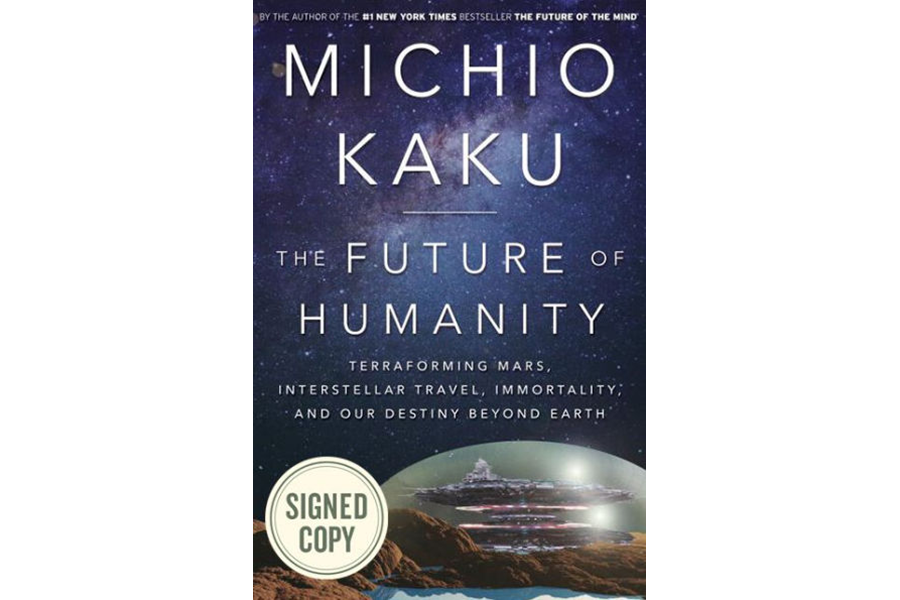'The Future of Humanity' recommends evacuating Earth in order to save the species
Loading...
Theoretical physicist Michio Kaku, author of the bestselling 1994 book "Hyperspace: A Scientific Odyssey Through Parallel Universes, Time Warps, and the Tenth Dimension," is a science writer who's had the great good fortune to be dubbed a “futurist,” an expert on things that haven't happened yet, as evidenced in the titles of his last two books, also robust sellers: 2011's "Physics of the Future" and 2014's "The Future of the Mind." His new book, The Future of Humanity: Terraforming Mars, Interstellar Travel, Immortality, and Our Destiny Beyond Earth, continues this trend.
In this new book, Kaku actually quotes Mark Twain, who once quipped, “There is something fascinating about science. One gets such wholesale returns on conjecture out of such a trifling investment of fact.” And yet the fundamental premise of "The Future of Humanity" isn't truly conjecture but rather inescapable projection of fact: One kind of doom or other surely awaits humans. Ninety-nine point nine percent of all species that have evolved on this planet have likewise gone extinct, and the tenure on Earth of modern-day Homo sapiens is an eye-blink compared to that of many thousands of those now-vanished species.
The rogue's gallery of possible culprits is large and well known. Earth orbits the sun in what Carl Sagan (quoted often in Kaku's book) referred to as a kind of cosmic shooting gallery, with potentially life-eradicating comets and asteroids whizzing into the inner solar system all the time; a direct impact by virtually any of these Near Earth Objects would probably wipe out most life on the planet. The general climate of Earth is currently lulling between two ice ages, so Kaku is entirely warranted in speculating about how crushing a new ice age would be for a species like humans, which grew and flourished in that warm trough. And there's always the Yellowstone Supervolcano, which is statistically “due” for the kind of eruption that would darken the skies of the planet, render agriculture all but impossible, and imperil all life on Earth.
“The grand history of life on Earth shows that, faced with a hostile environment, organisms inevitably meet one of three fates,” Kaku writes in response to all this doom and gloom. “They can leave that environment, they can adapt to it, or they will die. But if we look far enough into the future, we will eventually face a disaster so great that adaptation will be virtually impossible. Either we must leave the Earth or we will perish. There is no other way.”
Hence, the bulk of "The Future of Humanity" concentrates on evacuating Earth in order to save the species. Kaku surveys the options: establishing a permanent and expanding base on the moon, colonizing Mars, or striking out for any of the Earth-like exoplanets that have been discovered by long-range astronomy in the last decade.
The mind-staggeringly long voyages to those exoplanets, Kaku writes, might be accomplished by mastering theoretical “wormholes” that burrow through the spacetime that's otherwise limited by the speed of light. Or it might be overseen by self-aware computers, or else human scientists genetically modified to be virtually immortal.
The problem here is immediately obvious: catch-all “futurist” label notwithstanding, a theoretical physicist is no more specially qualified to speculate about things like advanced AI or human genetic manipulation than is any teenage science nerd uploading videos to YouTube. There are points in "The Future of Humanity" where this is unavoidably obvious, and it hurts the book.
“When self-aware robots do arrive, we must add a fail-safe chip that will shut them off if they have murderous thoughts,” Kaku writes, for example. “We can rest easy knowing that we will not be placed in zoos anytime soon, where our robot successors can throw peanuts at us through the bars and make us dance.” When theorizing about those genetically-altered humans, he writes, “In the same way we save up months for long-awaited vacations, immortal beings may view the centuries necessary to visit the stars as nothing more than an annoyance.” His only qualification for these and many other pronouncements is a sunny disposition.
His more elaborate speculations in the book's closing chapters – on quantum mechanics and humanity's possible flight to alternate dimensions and any number of other fantasias (“Wormholes may open up and close before our eyes. Bubble universes may pop into and out of existence”) – are at least connected with Kaku's area of technical expertise, albeit completely unmoored from reality.
Fortunately, by this point in his career, Kaku is a practiced and very effective popularizer of science for a general audience; he's unfailingly interesting, with an unerring instinct for the most thought-provoking aspects of his various subjects. The sheer amount of technical scientific speculation in "The Future of Humanity" is amazing, and yet Kaku is in smooth, perfect control of it the entire time. He spends virtually no time assessing whether or not humanity should colonize other worlds (a pointed question, considering how badly humanity has wrecked its home world) – instead, he hopes humans will beat the extinction odds and then offers some possible strategies.








